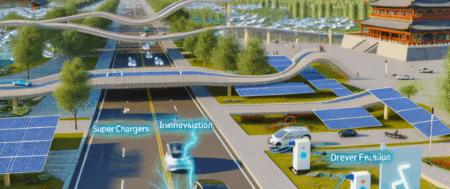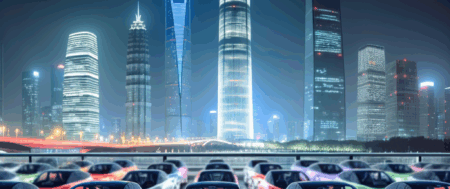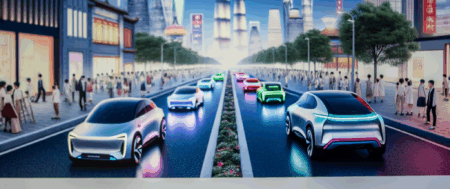Navigating the complexities of China, the world’s largest automotive market, requires agility and innovation amidst its growing economy and urbanization. This dynamic landscape is shaped by evolving consumer preferences, a surge in demand for Electric Vehicles (EVs) and New Energy Vehicles (NEVs) driven by environmental concerns and government incentives. Both foreign automakers and domestic car brands face fierce market competition, pushing them towards joint ventures to align global technological advancements with local insights. Success hinges on strategic partnerships, understanding the regulatory landscape, and leveraging technological advancements to meet the shifting demands towards sustainable transportation.
In the heart of the global automotive industry’s evolution, China stands tall as the largest automotive market in the world, a title it has claimed through a combination of its growing economy, extensive urbanization, and an ever-expanding middle class. This vibrant market landscape is not just a battleground for domestic car brands and foreign automakers but also a dynamic stage where technological advancements, environmental concerns, and government incentives shape the future. As the demand for Electric Vehicles (EVs) and New Energy Vehicles (NEVs) surges, driven by a societal shift towards cleaner transportation options and robust government policies, understanding the complexities of this market becomes crucial for any player aiming to make a mark.
This article delves deep into how top brands are navigating China’s booming economy and the evolving consumer preferences that characterize the world’s largest automotive market. From exploring the significant rise of EVs and NEVs fostered by attractive government incentives, to dissecting the critical role of joint ventures and strategic partnerships in overcoming the challenges posed by China’s intricate regulatory landscape, we cover the comprehensive spectrum of factors influencing market dynamics. The competitive interplay between domestic and foreign manufacturers, underpinned by the pursuit of technological innovation and sustainability, further underscores the unique aspects of China’s automotive sector.
As we embark on this journey to unravel the complexities of thriving in China’s automotive market, we also shed light on the broader implications of China’s leadership in global car production and sales. The insights provided aim to equip stakeholders with a deeper understanding of the market competition, consumer preferences, and the strategic maneuvers necessary to succeed in this lucrative yet challenging environment.
1. “Navigating the World’s Largest Automotive Market: How Top Players Adapt to China’s Growing Economy, Urbanization, and Evolving Consumer Preferences”

Navigating the world’s largest automotive market requires agility, innovation, and a deep understanding of the unique ecosystem that defines China’s automotive landscape. As the Chinese economy continues to grow, bolstered by rapid urbanization and an expanding middle class, consumer preferences are evolving at an unprecedented pace. This dynamic environment presents both opportunities and challenges for domestic car brands and foreign automakers alike.
The Chinese market’s appetite for Electric Vehicles (EVs) and New Energy Vehicles (NEVs) is particularly voracious, fueled by environmental concerns and robust government incentives. These factors have accelerated the shift towards greener, more sustainable modes of transportation, setting a global benchmark for the adoption of electric mobility. Top players in the market are keenly aware of this trend and are rapidly adjusting their product lines to include a wider range of EVs and NEVs to meet this surging demand.
Foreign automakers, in particular, face a complex regulatory landscape that necessitates strategic partnerships to effectively compete. Joint ventures have become a cornerstone strategy, allowing international brands to tap into the vast consumer base while navigating the intricacies of local regulations and market preferences. These collaborations often leverage the strengths of both domestic and foreign companies—combining advanced technological advancements from abroad with local insights into consumer behavior and preferences.
The competition in China’s automotive sector is fierce, pushing companies to continuously innovate and adapt. Technological advancements are at the heart of this battle, with automakers investing heavily in research and development to introduce cutting-edge features that appeal to the tech-savvy Chinese consumer. From autonomous driving capabilities to connected car technologies, the race to lead in innovation is relentless.
Understanding and adapting to consumer preferences is also critical for success in the Chinese market. As urbanization continues to reshape lifestyles and transportation needs, automakers must offer products that resonate with the values and aspirations of China’s burgeoning middle class. This often means vehicles that are not only environmentally friendly but also equipped with the latest technology and comfort features.
Government policies and incentives play a pivotal role in shaping the market dynamics. The Chinese government’s push towards NEVs through subsidies and other incentives is a clear indicator of the direction in which the market is headed. Automakers, both domestic and foreign, must align their strategies with these policies to capitalize on the growing demand for environmentally friendly vehicles.
In conclusion, succeeding in China’s automotive market, the largest of its kind globally, requires a multifaceted approach. Top players must navigate the complex regulatory landscape, forge strategic partnerships, stay ahead of technological advancements, and remain attuned to evolving consumer preferences. With environmental concerns and government incentives steering the market towards electric and new energy vehicles, automakers that can adeptly adapt to these shifts will be best positioned to thrive in this competitive and ever-changing environment.
In conclusion, the landscape of the world’s largest automotive market is both vast and intricate, shaped by a myriad of factors from government incentives to the rapid urbanization of its cities. China’s position as a dominant force in the global automotive industry is underpinned by its growing economy, burgeoning middle class, and increasing environmental concerns, all contributing to a high demand for both electric vehicles (EVs) and new energy vehicles (NEVs). The competitive nature of this market is further intensified by the presence of both domestic car brands and foreign automakers, the latter navigating the complex regulatory landscape through strategic joint ventures with local companies.
The success in this dynamic market hinges on a deep understanding of consumer preferences, which are increasingly leaning towards sustainable and technologically advanced transportation options. Furthermore, the ability to adapt to technological advancements, alongside forging strong strategic partnerships, is paramount for any player aiming to thrive amid the intense market competition. As China continues to lead the charge in the automotive industry, its influence on global economic trends, environmental policies, and technological innovation will undoubtedly persist. For companies looking to make their mark, leveraging government incentives, understanding the regulatory landscape, and responding to the evolving needs of the Chinese consumer will be key strategies. The future of the automotive sector in China promises not only challenges but also unparalleled opportunities for growth, innovation, and leadership in the transition towards a more sustainable automotive future.







